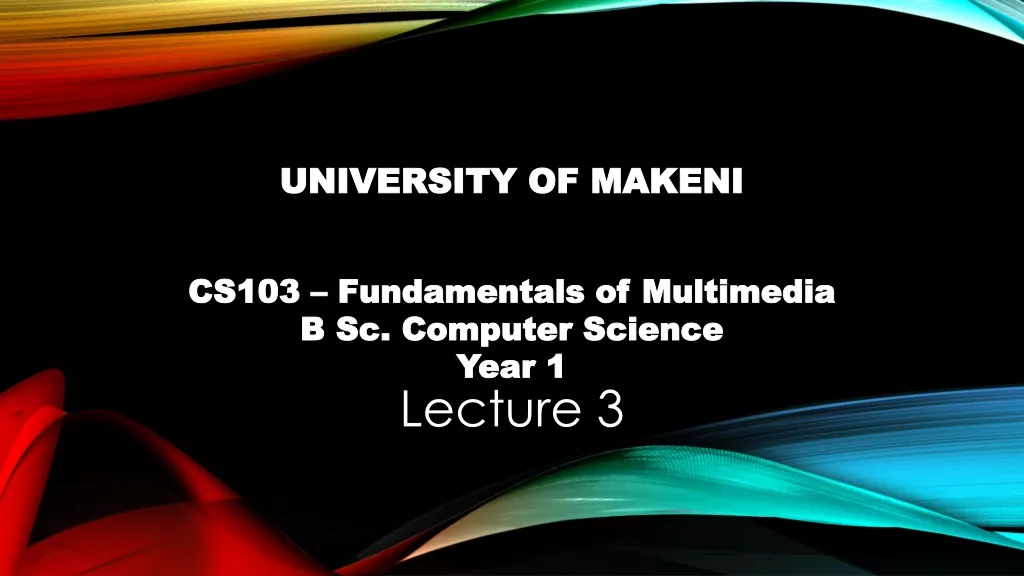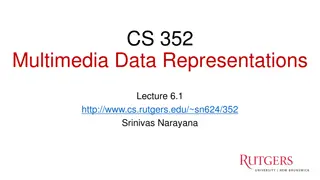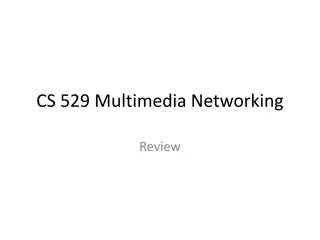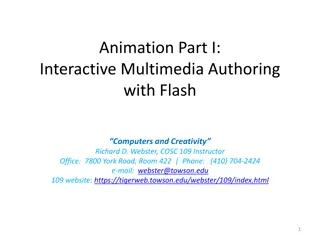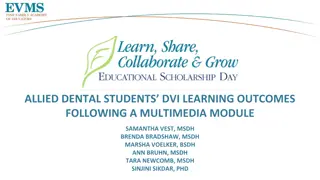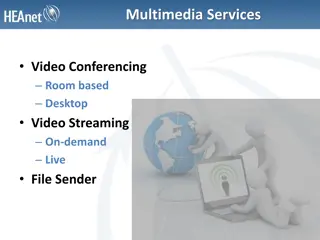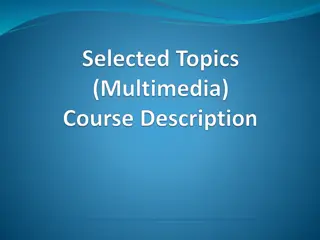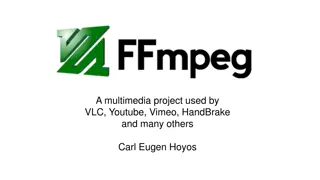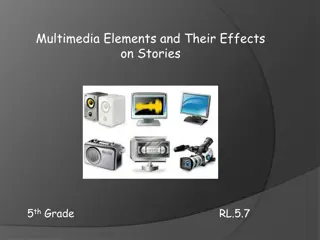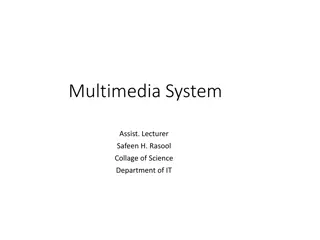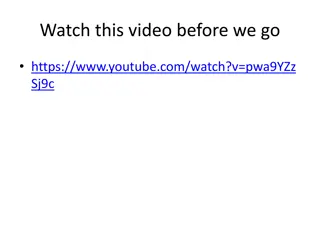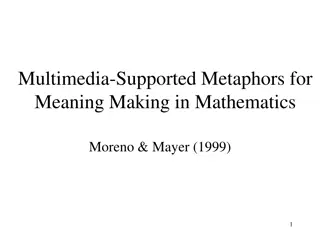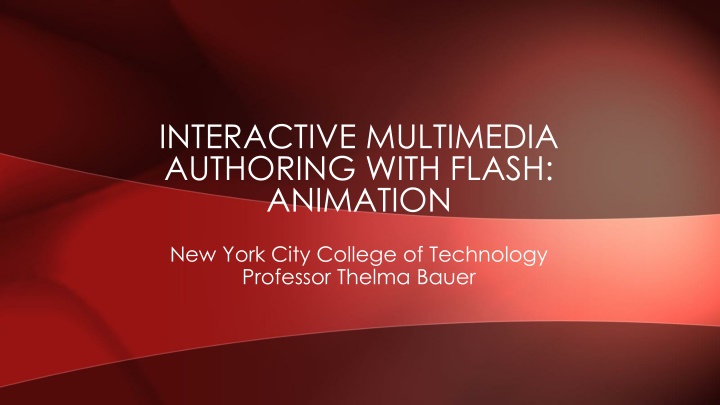
Flash Animation and Multimedia Authoring Overview
Discover the process of multimedia authoring, animation creation, and Flash workspace overview. Learn about shapes, symbols, and various animation techniques in multimedia projects. Explore how Flash supports animation creation with its own scripting language, ActionScript.
Uploaded on | 2 Views
Download Presentation

Please find below an Image/Link to download the presentation.
The content on the website is provided AS IS for your information and personal use only. It may not be sold, licensed, or shared on other websites without obtaining consent from the author. If you encounter any issues during the download, it is possible that the publisher has removed the file from their server.
You are allowed to download the files provided on this website for personal or commercial use, subject to the condition that they are used lawfully. All files are the property of their respective owners.
The content on the website is provided AS IS for your information and personal use only. It may not be sold, licensed, or shared on other websites without obtaining consent from the author.
E N D
Presentation Transcript
INTERACTIVE MULTIMEDIA AUTHORING WITH FLASH: ANIMATION New York City College of Technology Professor Thelma Bauer
Multimedia Authoring Multimedia authoring is the process of creating a multimedia production. It involves assembling or sequencing different media elements, adding interactivity, and then packaging the production for distribution to end users. The two most common forms of distributing multimedia productions are stand-alone apps or executables and movies that play back in a Web browser. Publishing in any of these two formats allows others to view your finished project without the authoring environment. Flash lets you publish your movie as a stand-alone executable, called projector, and an SWF file for the Web.
Animation Conceptually, animation is very much like video. It is a sequence of images that creates the illusion of movement when played rapidly in succession. Many multimedia projects make use of animation, and many multimedia authoring programs, such as Flash and Director, allow you to create animation. These programs are frame based. This means that you can sequence the animation content visually on a timeline as a sequence of frames. There are several different ways to create animations with these programs: frame by frame, tweening, and scripting. These methods are not exclusive of each other
Multimedia authoring programs such as Flash support animation creation and have their own scripting languages. Flash s scripting language is called ActionScript. Flash is a frame-based program which uses timelines that are comprised of frames. You can create frame-based animations using frame- by-frame and tweening techniques. With scripting support, you also can create animation using scripts. Scripting lets you incorporate interactivity and nonlinear playback in your multimedia project.
Flashs Workspace This chapter gives you an overview of Flash s workspace, and introduces you the Tools panel, Stage, Timeline panel, Property Inspector, and Library panel. Shapes and Symbols The visual items used on the Stage in a Flash file can be categorized as two types: shapes and symbols. They have different properties, purposes, and requirements. A Shape are made up of strokes and/or fills A Symbol can contain shapes and other symbols. Symbols are stored in the library panel and can be reused throughout the project. To place a symbol on the Stage, you can drag the symbol from the Library panel onto the Stage.
There are three types of symbols: graphic, button, and movie clip. Graphic symbols are mainly used for static graphics. It can contain shapes and other graphic symbol instances They can be placed inside another graphic, button, or movie clip symbol. Buttons can contain shapes, movie clip instances, and sounds. Buttons can be controlled using Action-Script in response to mouse clicks and rollovers. A button s timeline only has four special-purpose frames, each corresponds to a mouse action on the button: up, over, down, and hit. Unlike a button, each movie clip has a full timeline for frame-based animation. Movie clips can contain shapes, instances of any of the three types of symbols, ActionScript, and sounds. Instances of movie clips can be controlled using ActionScript in response to mouse and keyboard interaction. Adding interactivity is one of the main purposes for using movie clips in interactive projects and games.
Tweening Tweening is an effective way to create movement and visual changes over time. There are two types of tweening in Flash: motion tween and shape tween. Shape tweens create the animation of a shape morphing into another. For tweening motion, there are two different types of tweens: Motion tweens and Classic tweens. A Motion tween begins with a keyframe and contains one or more property keyframes. A property keyframe belongs to a tween span. You can specify the property value, such as position, scale, rotation, and skew, for a property keyframe. The in-between frames are filled in automatically by interpolating the properties of the content in the two immediate keyframes. Classic tweens work similarly to Motion tweens but use regular keyframes and allow tweening of a symbol instance s color effect and opacity.

